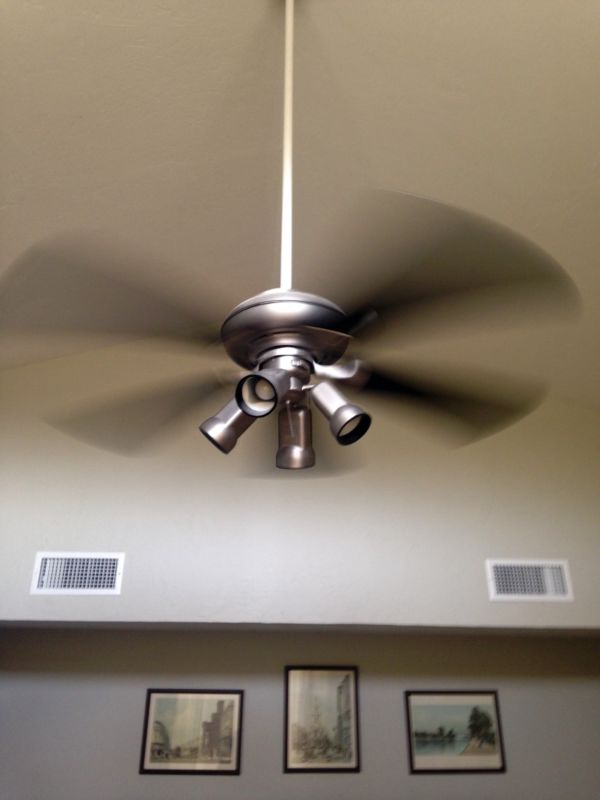Do Ceiling Fans Affect Humidity at Home? A Florida AC Tech Answers.
September 08, 2016

The south isn't the only part of the country that gets hot. However, nobody else quite understands hot and humid like we do. We know that the best way to cool off isn't just the AC; you need a ceiling fan. So, if the ceiling fan cools you off, it has to cut down the humidity, right?
Wrong.
Humidity is just water vapor in the air. A fan does not get rid of that humidity.
All a ceiling fan does is make you feel cooler. You see, when a fan circulates air around your body, the air can more easily evaporate sweat from your skin. And sweating is how you eliminate body heat (aka, cool down). The more evaporation there is, the cooler you feel. But, regardless, neither temperature nor humidity has decreased.
This perceived decrease in air temperature is called the “wind chill effect.”
A nice side effect of the wind chill effect is that you can turn the thermostat up a few degrees to save on energy costs while maintaining a comfortable temperature in your home. Just make sure you’re using your ceiling fan the right way.
So, how can you reduce humidity in your home?
To lower humidity in your home, use these 3 DIY methods:
1. Ventilate.
This is the easiest way to fight humidity in your home. Showering and cooking especially introduce humidity into the air, so make sure that your exhaust fans are turned on in the bathroom and over the stove.
2. Check water sources.
Extra water in your home will increase humidity. Make sure to repair any leaking pipes and keep watered plants outside.
3. Add a desiccant.
A desiccant is usually a silica gel that absorbs water from the environment. By placing silica in a cloth bag, you can naturally eliminate humidity. Silica is reusable; once it is saturated, just heat it in the oven (make sure your exhaust fan is on!) and you can use it again. Many big box stores sell silica. Activated charcoal or some types of kitty litter can be used as desiccants.
If these do-it-yourself methods are not enough, you still have options:
1. Dehumidifier
There are different kinds of dehumidifiers.
- A desiccant dehumidifier absorbs humidity from the air as it passes through the appliance. The desiccant is then heated within the machine to eliminate the moisture that was absorbed.
- A thermo-electric dehumidifier pulls air into a cooling side, which causes it to condense and lose moisture. It is then passed through a heating side which returns the dry air to room temperature and pushes it back out.
- A mechanical dehumidifier has a fan that pulls the humid air into cooling coils. The cooling of the air causes it to release moisture, which is collected in a small basin within the machine. The air, without the water, is then pushed back out. This method does require the emptying of the collection basin. There are also whole-house mechanical dehumidifiers, which are installed in your ductwork and don’t require emptying a basin.
2. Two-stage air conditioner
Much like a mechanical dehumidifier, air conditioning units also have cooling coils that remove moisture from the air. But a two-stage air conditioner can dehumidify your home even further because it has a “Low” energy-efficient setting which causes the AC unit to run for longer periods of time, resulting in more constant airflow and moisture removal.
Want to learn more about a two-stage air conditioners?
(It's free)
- Posted in:
- Air Conditioning

